
Board games are undoubtedly a great way to pass the time and bond with friends and family. From the most complacent members to the most belligerent, everyone has a role to fill in the process of gameplay. That ensures that there’s always someone to keep the competition alive, and someone to keep the rules fair! Unfortunately, some games have been played until the board begins to fade and the game-pieces lose their color. After a point, the very sight of monopoly money can give you horrific flashbacks of your child taking all your property and your money, in a horrifying turn of events. But that’s no reason to give up on tabletop games.
Trying out different games can be a great way for everyone, friends and family alike, to discover where their specialty lies, whether it's in deduction games like Clue, strategy games like Monopoly, war games like Battleship or games of sheer will and persistence like Life! You don’t have to limit yourself to these big-named games. Here are some games that you’ve probably never heard of that could make your next family game night a true whirlwind of excitement and anticipation.
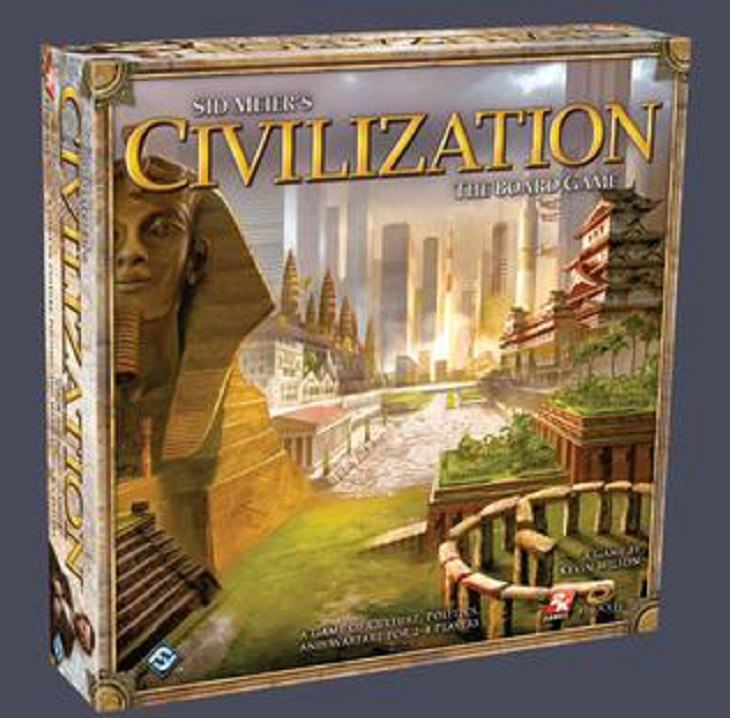
This game was first released in the UK in 1980 by Hartland Trefoil (later by Gibson Games) and in the United States the following year, released by Avalon Hills and now owned by Hasbro. If you thought monopoly was fun, Civilization will have you on the edge of your seat and your eyes burning with a competitive drive. This game gives you and your fellow players a chance to go back to the dawn of humanity and literally build your own civilization, competing and cooperating with other civilizations to become the most advanced one of them all.
The board depicts various areas in the Mediterranean Sea, where early societies first began to develop. Each player is designated a certain single area (like Crete) and a population that goes with it. Every turn, players can collect cards and tokens for a variety of important resources. To begin with, you will need tokens to increase an area's population exponentially, and with enough of these tokens, these areas can be evolved into cities. As populations expand, your civilization will undoubtedly collide with those of other players. Now arises a chance for strategic cooperation.
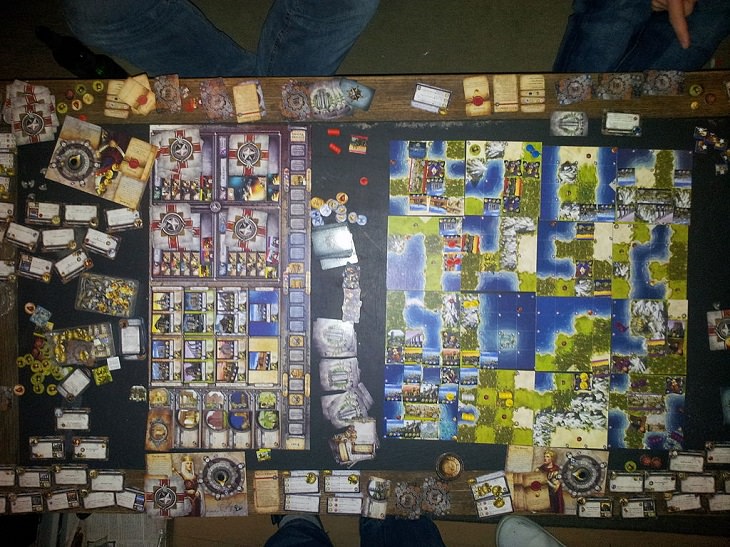
(By Ervaude, Wikimedia Commons)
Like with all developing societies, trade is a vital part of expansion and advancement. Tokens for items like bronze, gold, salt, spices, and grains can be collected and traded with other players’ civilizations. The goal here is to collect more tokens of the same commodity, as much like rent payouts in Monopoly, having complete sets of commodities guarantee you larger payments while trading. As your basic resources increase, you can collect tokens for more advanced forms of tech, agriculture, and medicine and continue to move forward on the board.
With certain commodity tokens, disaster tokens quickly follow, like volcanoes, civil wars and famines, which will wipe out resources and populations that need to be rebuilt, unless, of course, you have the resources to mitigate the damage! You can also collect cultural event tokens, build huts, villages, and cities, and develop your little nation into a thriving economy. The goal of this game is to reach the space marked on the board as the Archaeological Succession Table (AST), which essentially indicates that your civilization was the first to become the most advanced! Then you can sit back and watch the remaining civilizations claw their way to the top.
This game can be played between 2 players and up to 7. Winning this game is highly dependent on trading and interaction with other civilizations, so the more the merrier and the greater your opportunity to win. As you can imagine, leading an entire civilization to the bright light of absolute advancement is not a quick task, so the game can take between 6 to 8 hours to complete, but its impossible not to be enthralled by the game until the very end. There is no elimination in this game, so each player gets to see the game through to the end, though the winner remains the first to reach advancement.
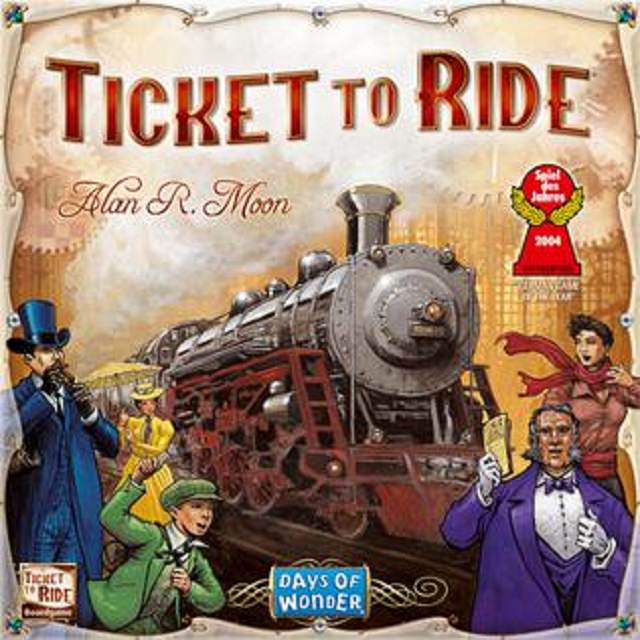
“Ticket to Ride” is a train-themed Eurogame (unrelated to the Beatles song) that was released in 2004 by Days of Wonder. This game puts you (and all the players) in a position to become a true railway Mogul, building, developing, and expanding your own transit system and connecting distant areas in innovative ways. It is especially popular in European countries but has also gained much fame in the US. By 2014, over three million copies of this game were sold worldwide and it has been the recipient of numerous gaming awards. “Ticket to Ride” gives you a chance to strategically build your own Union Pacific!
To begin with, each player is given 4 train car cards which constitutes their playing hand and 3 destination cards, of which at least 2 must be held at any given point of time. These destination cards can be kept hidden and essentially serve as goals, destinations to which the routes collected by the player should connect to. Each player is also given access to 45 colored train pieces that can be placed on the board as points are earned.
Each turn the player can either draw two railway cards, draw additional destination tickets of which at least one must be held, or play railway cards in their hand to claim a route on the board. While players can claim an unclaimed route that isn’t connected to their existing routes, the goal is to collect as many matching colored railway cards and add more colored train cars to their route. This helps you work toward your final goal of reaching and connecting the destination on your destination ticket.
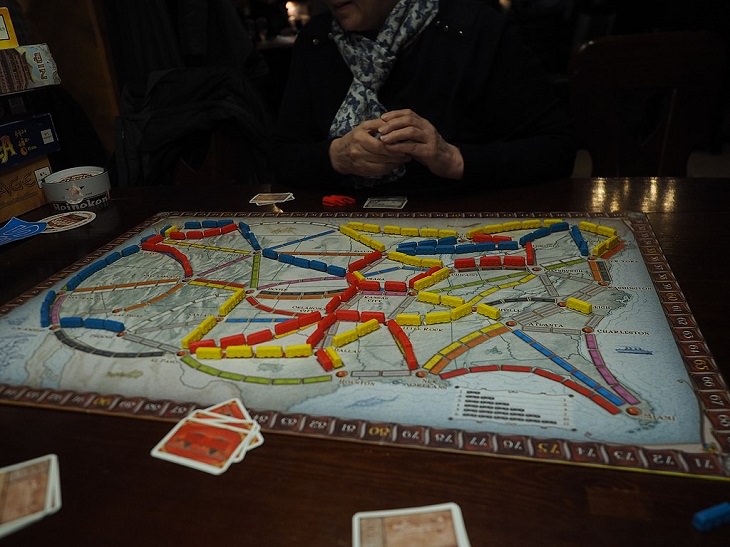
(By JIP, Wikimedia Commons)
A major strategy in this game is to select routes that can be extended. The longer your route becomes, the more points you get. Since the various routes are of different lengths, the key to gaining more points is to claim more routes. Many cities may also have parallel routes connecting them which should be claimed by two different players. A single player cannot claim these parallel routes between the same cities.
When there are only 2 or less colored train markers left for at least one player, the game is reaching its end. After playing an additional turn, the players reveal their destination cards. Points are added and subtracted based on the completion of tracks to those destinations, as well as for the player with the longest continuous track. The person with the highest number of points wins!
This game requires a minimum of two and a maximum of five players. As there is no trading of cards involved, unlike in Civilization, this game can be enjoyed equally with just two people as with four or five. This game focuses on the expansion of railway lines, differentiated by colored markers (respective colors for train cars belonging to respective players). A draw pile holds all additional destination cards and railway route cards for players to add to their playing hand. “Ticket to Ride” only takes between 1 and 2 hours to complete so its a great addition to any game night.
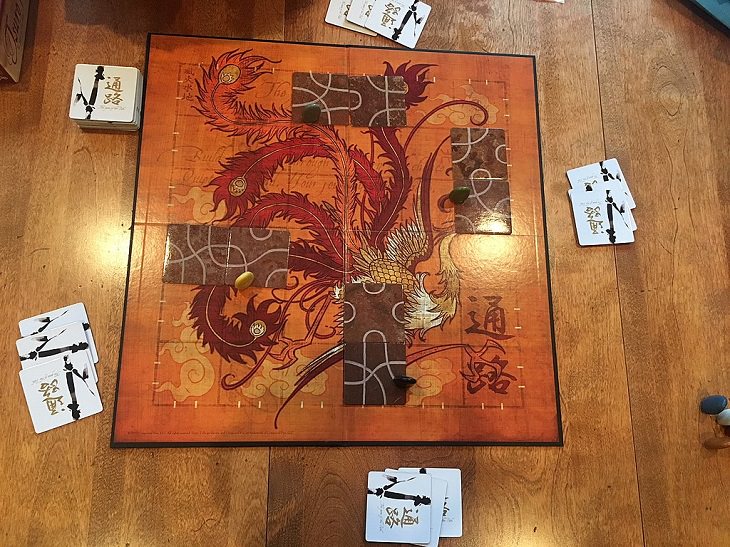
(By Asetera, Wikimedia Commons)
Despite its name and oriental themes, Tsuro is a board game that was originally released by WizKids, a New Jersey game company, and is now owned by another American company, Calliope Games. The name of this tile-based game “Tsuro”, is the Japanese word for “route”, and it is played by moving the game pieces around the board using paths laid out by game tiles. The goal is to lead all the other players on paths that knock them off the board until yours is the last piece remaining.
At the start of the game, each player selects one colored game piece and places them on one of the white markers at the edge of the board. The board itself is divided into a grid, with six-by-six squares, the same size as the tiles provided with the game. The pile of tiles is kept aside, and each player is given 3 tiles, to begin with. After the respective game pieces have been placed on the white markers, each player begins by playing a tile in front of their piece, along which their piece can move.
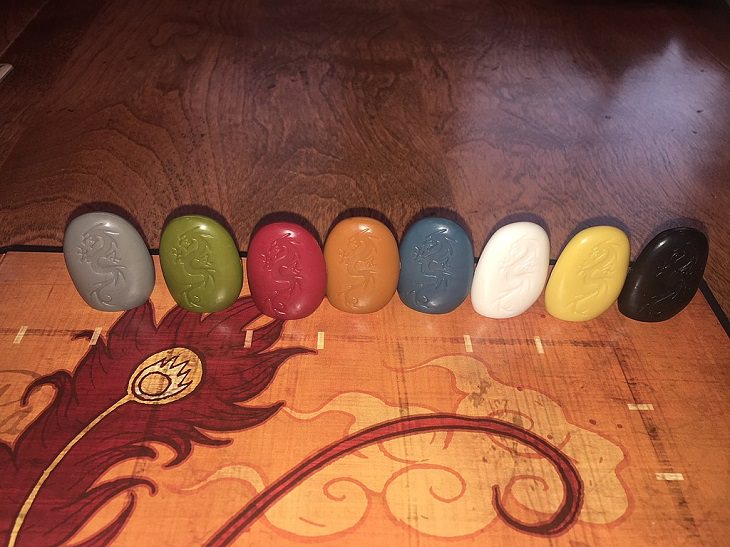
(By Asetera, Wikimedia Commons)
A game piece can be moved only once each turn, and only along the tiles placed. Every turn, players have to put down a tile on the square in front of the game piece and at the end of the turn, a new tile has to be drawn from the tile pile. There are a total of 35 tiles in the pile and one dragon tile kept aside to be taken and held by the player whose turn falls when the tiles in the pile have all been drawn. The Dragon Tile indicates that that player will be the first to draw a tile when a player has been eliminated.
As tiles are placed on the board by each player for their game piece to move around, one player's line of tiles might intersect with another. When the first player's tile connects to the second player, the second player must move his piece to the end of the line of tiles. Depending on the placement of the second player's tile, for example, if it is placed as a straight line from the white marker, the second player's piece will be forced off the board, thereby eliminating that player. The eliminated player's tiles are then sent to the pile of tiles to be drawn.
Tsuro is a game that can be played and equally enjoyed by 2 people, though there are enough tiles for up to 8 people to play the game. More people will, however, reduce the amount of space for tiles on the board, resulting in players being eliminated faster and much shorter games. On average, each round of this game lasts only 15-20 minutes, so you can always play a quick “best of 5” tournament to see who is the reigning champion.
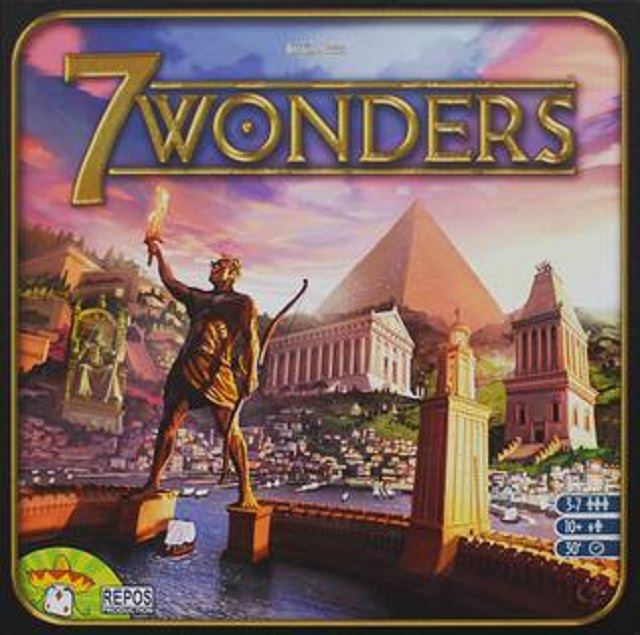
This game lets you become the leader of one of the great ancient civilizations and construct your own Wonder of the Ancient World. It was published and released in 2010 in Belgium by Repos Production and has since been dubbed one of the most influential games in the world. 7 Wonders is a game designed to take you through the ages of construction and civilization, and over the years, has been upgraded to include 8 different expanded versions. Though the game includes multiple boards and various game pieces, it is largely a card-drafting game.
This card game comes with a dedicated deck and 7 “wonder boards”, each depicting one of the 7 Wonders of the Ancient world, identified by 2nd century BC Greek poet, Antipater of Sidon. Each player gets their own wonder board, which is double-sided. Side A depicts wonders that are easier to build, while the ones on Side B are more difficult to build but more beneficial.
The game is played over three specific ages (Age I, II, and III), with each age having its own designated deck of cards. Each age is played by selecting 7 random cards, one of which is to be selected by the first player and placed on his/her wonder board (depending on what he/she wishes to build), after which the remaining 6 cards from the deck are handed over, face down, to the next player, who does the same. The cards are drafted in this manner until 1 card is left to be discarded.
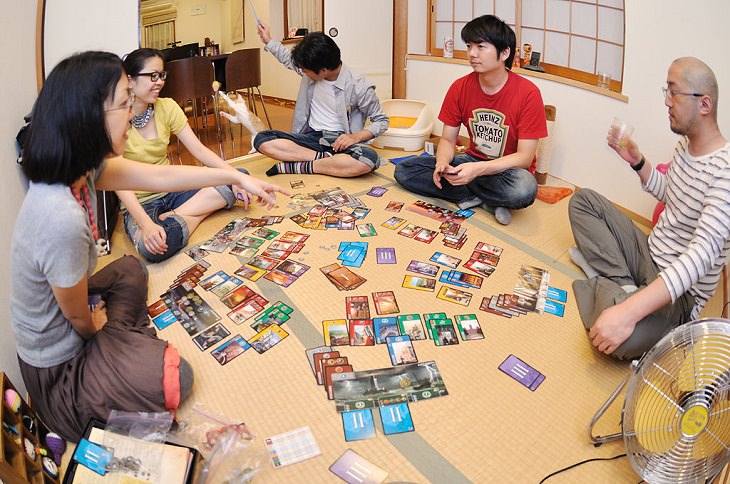
(By yoppy, Wikimedia Commons)
Each age card represents a different structure that can be built, color-coded based on the resource it provides. For example, red cards are for military structures, brown cards are for raw materials and purple cards are for guilds. Brown cards are only available in Ages I and II, while purple cards are only available in Age III. In keeping with the name of the game, there are 7 different types of resources designated in the Age cards.
Each structure can be built in stages, usually 2-4, and require a combination of playing various colored resource cards, and by using gold coins, which can be collected by discarding Age cards to the bank. Resources can even be bought from a neighboring player using coins but at double the resource's normal price. Each age may also have military conflicts that must be resolved before the new age begins. When all Age decks have been dealt and played, the players’ victory points are tallied, using 7 specified criteria, which include wonder stages, number of military victories, scientific structures, and even guilds, each of which has its own point value. The person awarded the highest number of points is the winner.
7 Wonders is meant to be played ideally with 3 to 7 people, though instructions are also given with the game for enjoying a 2 player version using similar rules. Setting up this game takes only a few minutes and requires only Wonder boards to be handed out to each player. Each game lasts between 30 to 45 minutes, which is approximately 15 minutes for each Age of the game. The final goal of the game, of course, is to build your own wonder structures of the world, and collect points!